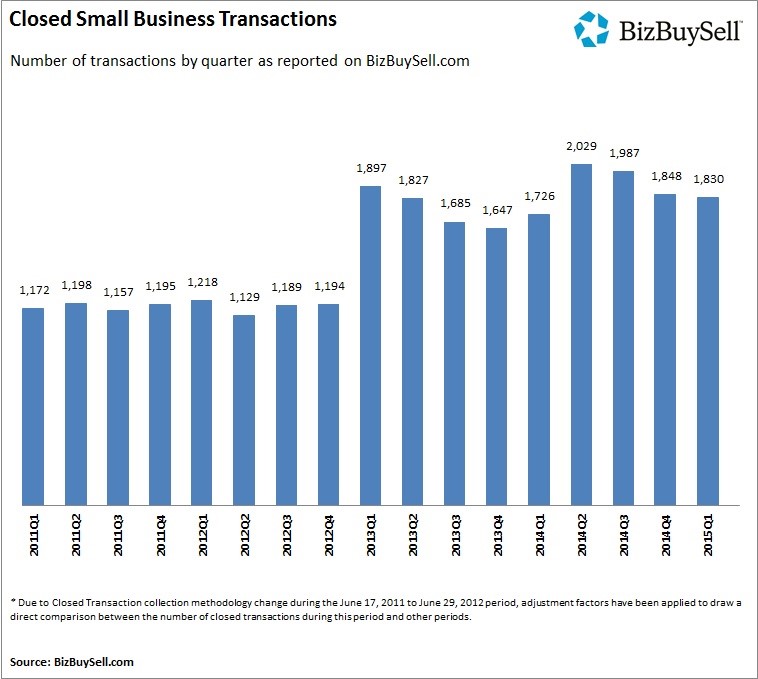
Source: ErmanCivici/iStock
While much has been written about what persuades investors to buy stakes in businesses, a lot of the discussion revolves around the investors’ decision process in relation to assessing seed or start-up investment opportunities. Advice is often targeted at “the pitch”, the qualities of the founder/s, etc. However, in the market for mature and, ahem, “post-revenue” businesses — and contrary to Silicon Valley thinking, established businesses making a profit do exist — criteria, decisions and funding work by slightly different rules.
Early Stage vs the Rest of the World
Early stage opportunities involve high risk, high cash-burn businesses. Investors who take equity or quasi-equity in these businesses expect most of these ventures to tank and a small fraction to become so enormously successful that they more than compensate for losses elsewhere. A VC would expect to get a higher return on money invested in (risky) early stage businesses than he’d get in safer, more liquid markets. But his ROI expectation is a fund-level expectation (i.e., it’s the overall return expected from his whole portfolio of investment). He does not expect that level of return for each and every business in the portfolio.
However, the much larger mergers & acquisitions (M&A) market marches to a different beat. It’s composed of trade and institutional investors, private equity firms, family offices and others, and they are looking for businesses with demonstrated viability, positive cash flow and a loyal customer base. Essentially, they want established and proven businesses. Every business “acquired” has to be a business which can be sold later for a higher price, usually after creating value by driving growth and/or reducing inefficiencies. The same logic applies in mergers — the merger makes sense when the merged entity is more than the sum of its component parts, meaning value has been created.
Risk vs Return
Acquisitory investors like private equity firms judge businesses differently to how VCs do. They are looking for a pre-determined level of return for a given level of risk. In other words, they have a wider range of potential acquisition targets — if the risk-reward ratio matches or exceeds their threshold, they’ll take a peek.
This is a key difference. In M&A deals, unlike with VC, considerable power to alter the risk-reward ratio rests with the business owner seeking investment.
Illustration: Acme Ltd. has an enterprise value of $5M. Acquirer PLC studies the business and forms an opinion that it will be cash generative over coming years to the tune of $400,000 per annum (8% of the asking price). Acquirer PLC also quantifies the risk of meeting those earning targets. They decide that the return doesn’t compensate them enough for the risk.
Acme Ltd. has two options to close a transaction — lower the price or lower the risk. Reducing the price of the business to $4M leaves the cash flow of $400,000 translating to a return of 10%. The higher rate just might be acceptable to this investor.
Alternatively, Acme Ltd. can reduce the risk PLC perceives in the business. Vendors may underwrite select liabilities, extend warranties and indemnities to the investor, or even accept part of their compensation being contingent on future performance. In doing so they change the risk profile of the business. In our case, the acquirer may be then willing to accept a lower rate of return — 8% — because they are also taking on less risk.
Understanding the Mindset of the People with the Money
Different players in the M&A market have different motivations, criteria and yardsticks on which they assess potential targets. Knowing the players and what drives their decisions is essential to succeeding in getting acquired, and getting acquired at the right price. To provide a couple of examples…
The Trade Investor
A trade investor is guided by his company’s strategic plans and the context his board has set out for potential acquisitions. This will include a framework for evaluating acquisition targets including, for example, specifications on sector, technologies, skills or intellectual property. They often attempt to make part payment in shares.
It is difficult to know each acquisitory company’s individual preferences, but to the extent the vendor can demonstrate the whole being greater than the sum of two parts, he’s on the right track. These buyers are not so keen on the business continuing to grow as it has in the past, but are more interested in accretion — how the integration of the target will aid their own growth. They see change. They worry about how that change will impact both operations. They are interested in back-office infrastructure, what functions they can eliminate and what cost savings they can extract.
They may be elements of a target that are not of strategic importance to these investors. It’s important to establish early into the dialogue as much as possible about their intentions, strategy and goals. This is to the vendor’s advantage. It allows him to focus on promoting to the acquirer those elements of his business that offer the synergies they’re seeking.
Even within individual acquirers, there will be competing interests. The CFO may be concerned about valuation multiples, ROI and current debt, and may not like the factoring company being used. The CTO may see hurdles in integration of IT systems — he never did the CRM software you’re using. Internal politics may have others align themselves against any acquisition if they perceive the status quo as a safer option for them as individuals. A good intermediary assisting with placing a business will be as much a politician and psychologist as a salesman.
The Financial Investor
These come in many shapes and sizes. They are not looking to merge operations so they evaluate targets as a stand-alone entities.
They may be financing a management buy-out (MBO) or they may be providing growth finance via a partial or complete equity transfer, but the intention is to facilitate the company’s growth. After this, they cash out by selling the business (or their stake) in about four to six years. Post-finance, the target company continues to operate independently with the same management team and with little personnel change except for new board appointees by the investor.
The prospect of the company delivering high growth in the near future is key to landing these deals. Continuity and growth are the themes, not change. As these investors are likely not familiar with the target’s industry it’s worth the vendor focusing more on explaining the industry, the competition, the business’ place within the ecosystem.
Conclusion
The importance of knowing the buyer, and what the buyer is really after, cannot be overemphasized. The approach best likely to result in success is the one targeted to what each specific acquirer is actively seeking.
Written by Clinton Lee
Clinton is the founder of The Exit Firm, a UK M&A consultancy that advises business owners on their exit options and connects them with the right professional expertise to help them achieve their exit goals.
Prior to starting this consultancy, Clinton’s entrepreneurial career spanned over three decades and included building, buying and selling of over two dozen businesses.
Now based in the UK, Clinton originally studied accountancy in India as an undergraduate and attended Virginia Tech in the USA for an MBA in finance.
Areas of Expertise: UK-based private companies with turnover of up to £10M.
How can you improve the value of your business?
Complete the “Value Builder” questionnaire today in just 13 minutes and we’ll send you a 27-page custom report assessing how well your business is positioned for selling. Take the test now:





 It is common for executives at companies to undergo an annual physical. Likewise, these same executives will likely examine their own investments at least once a year, if not more often. However, rather perplexingly, these same capable and responsible executives never consider giving their company an annual physical unless required to do so by rule or regulations.
It is common for executives at companies to undergo an annual physical. Likewise, these same executives will likely examine their own investments at least once a year, if not more often. However, rather perplexingly, these same capable and responsible executives never consider giving their company an annual physical unless required to do so by rule or regulations.





